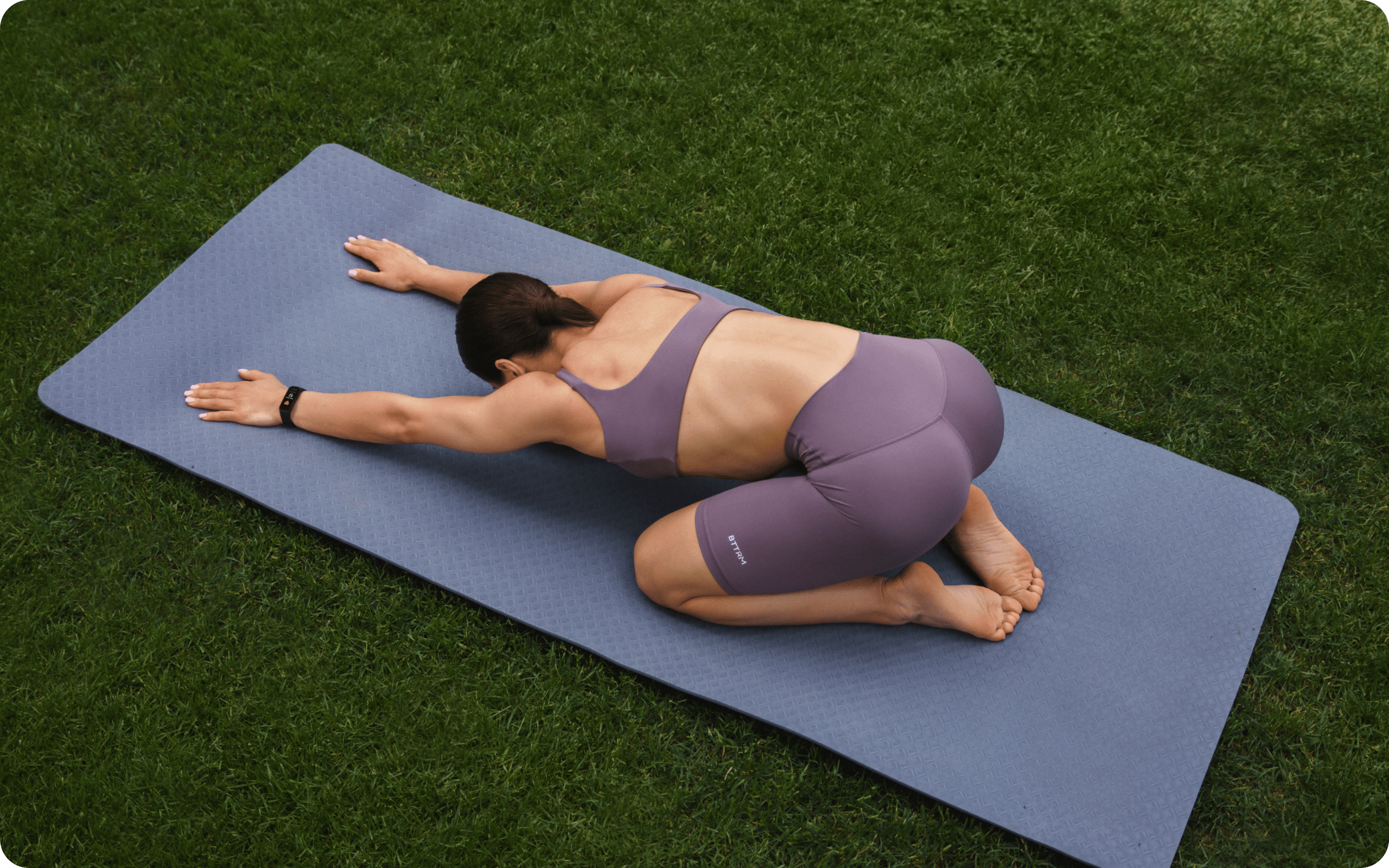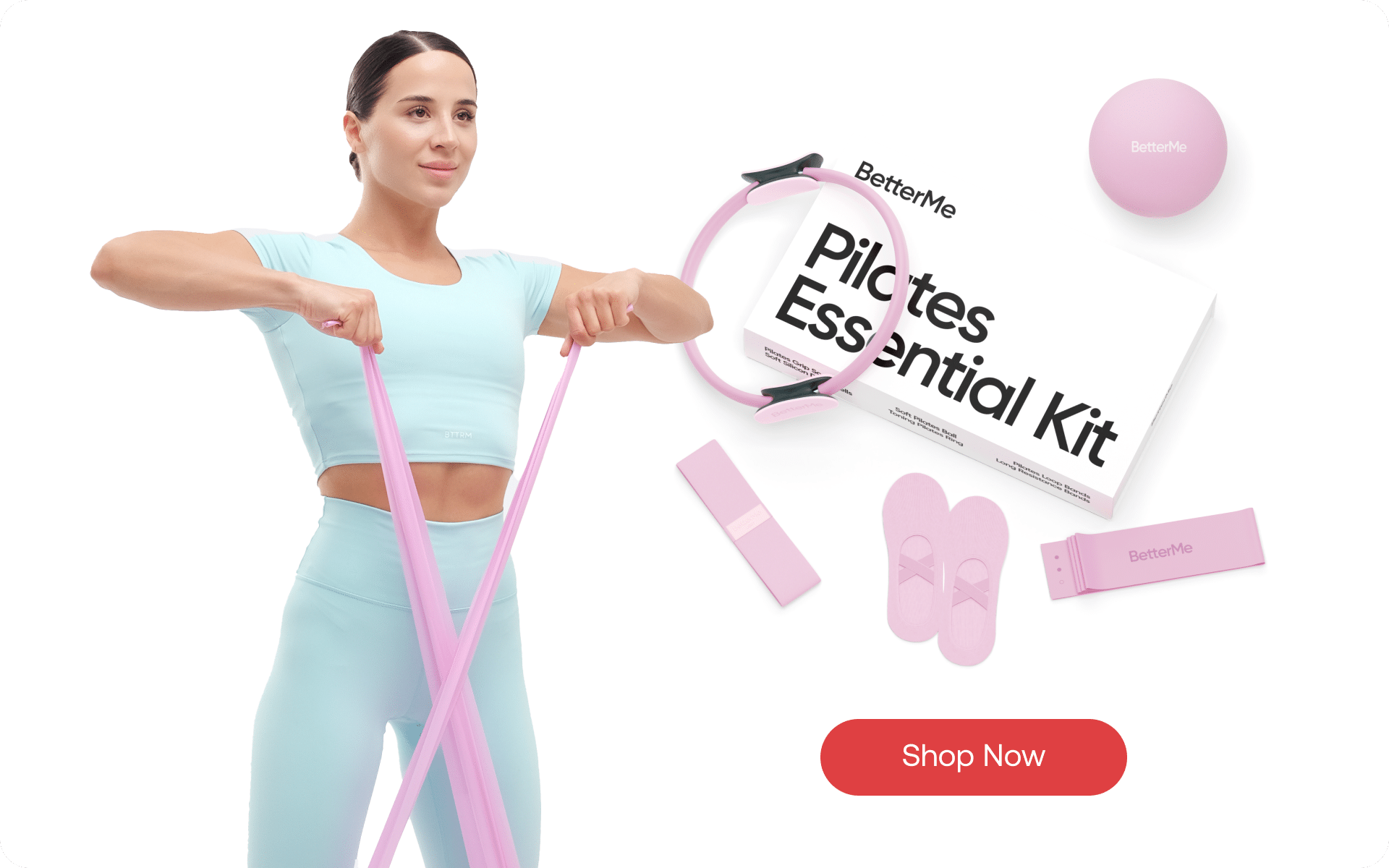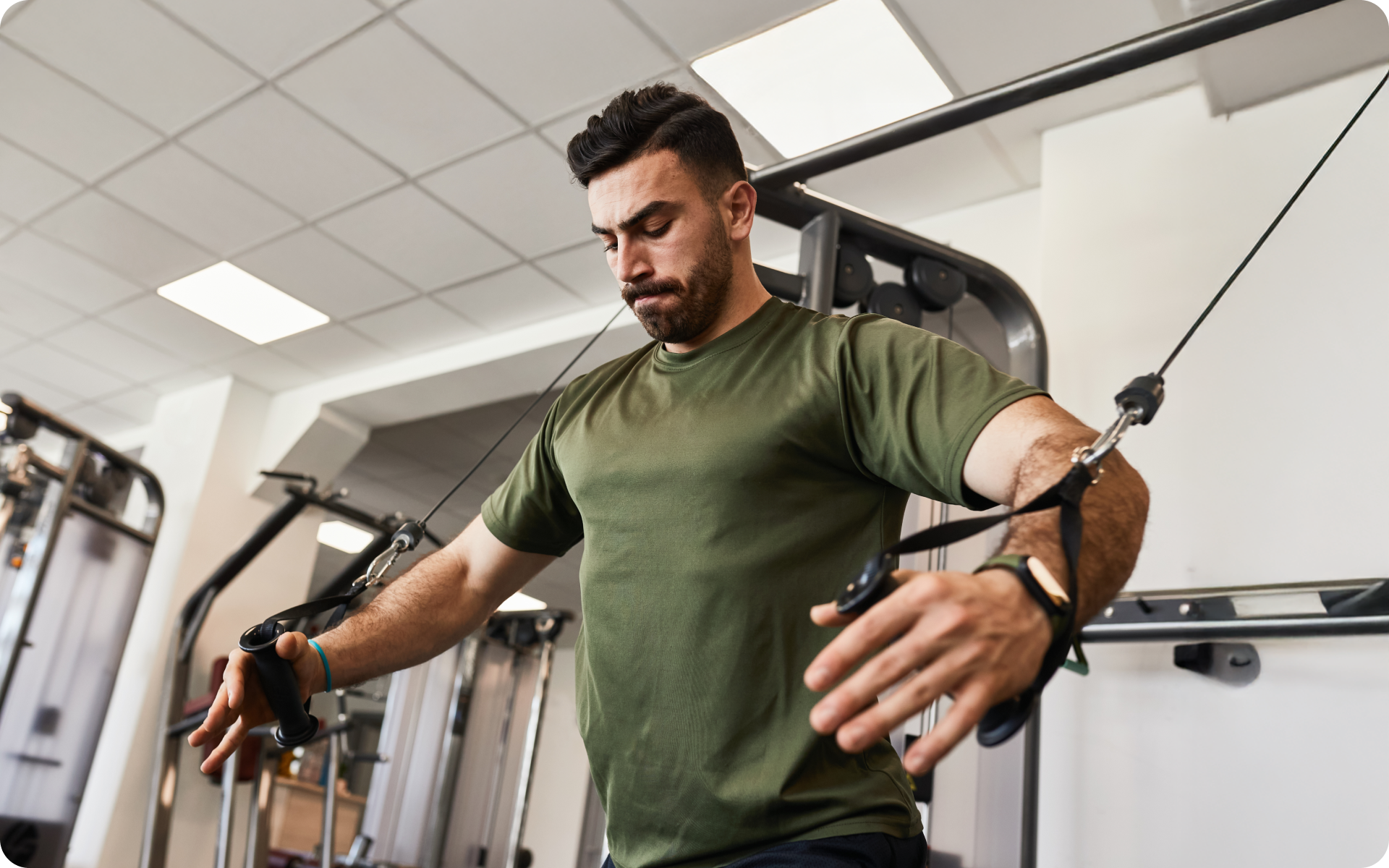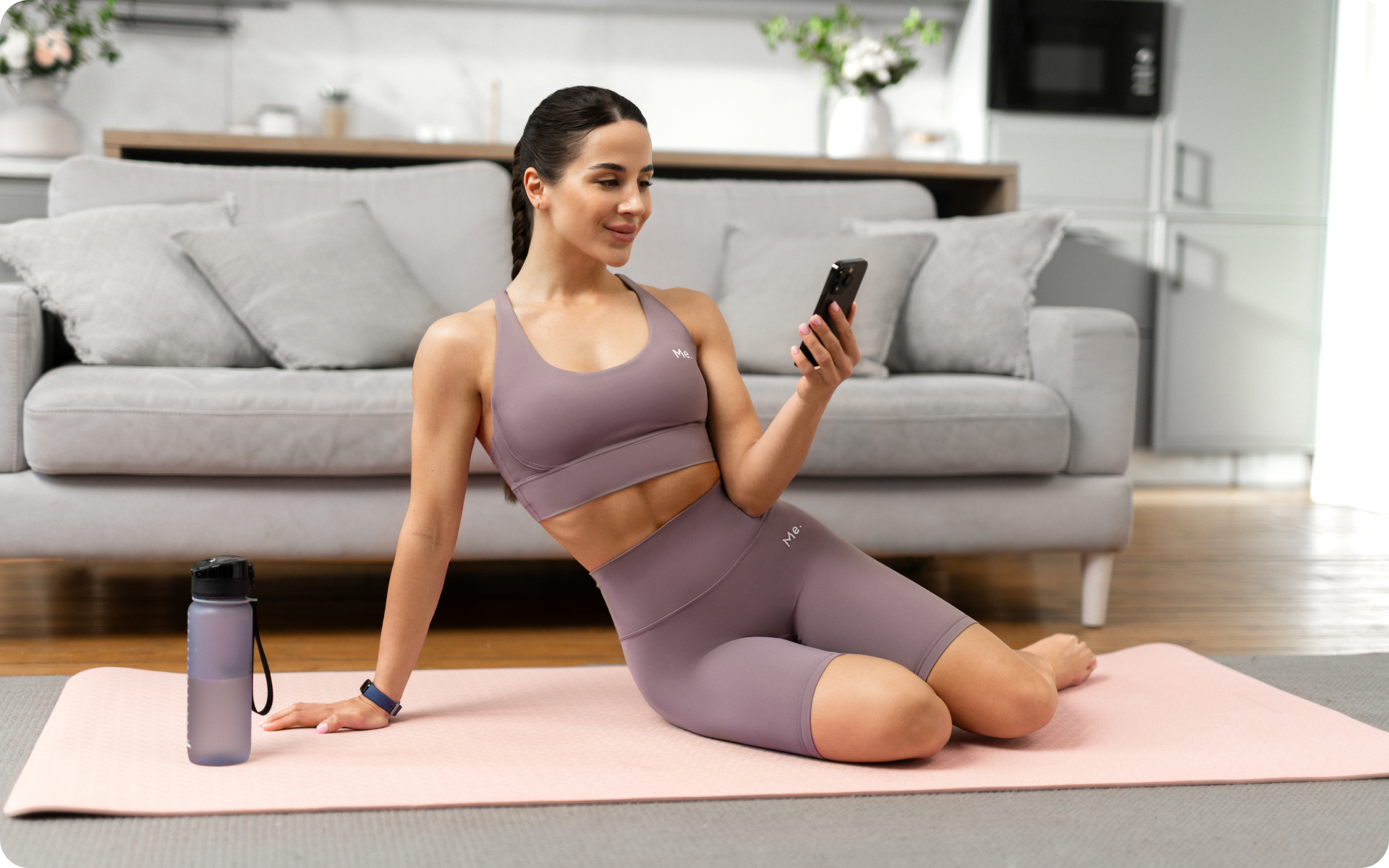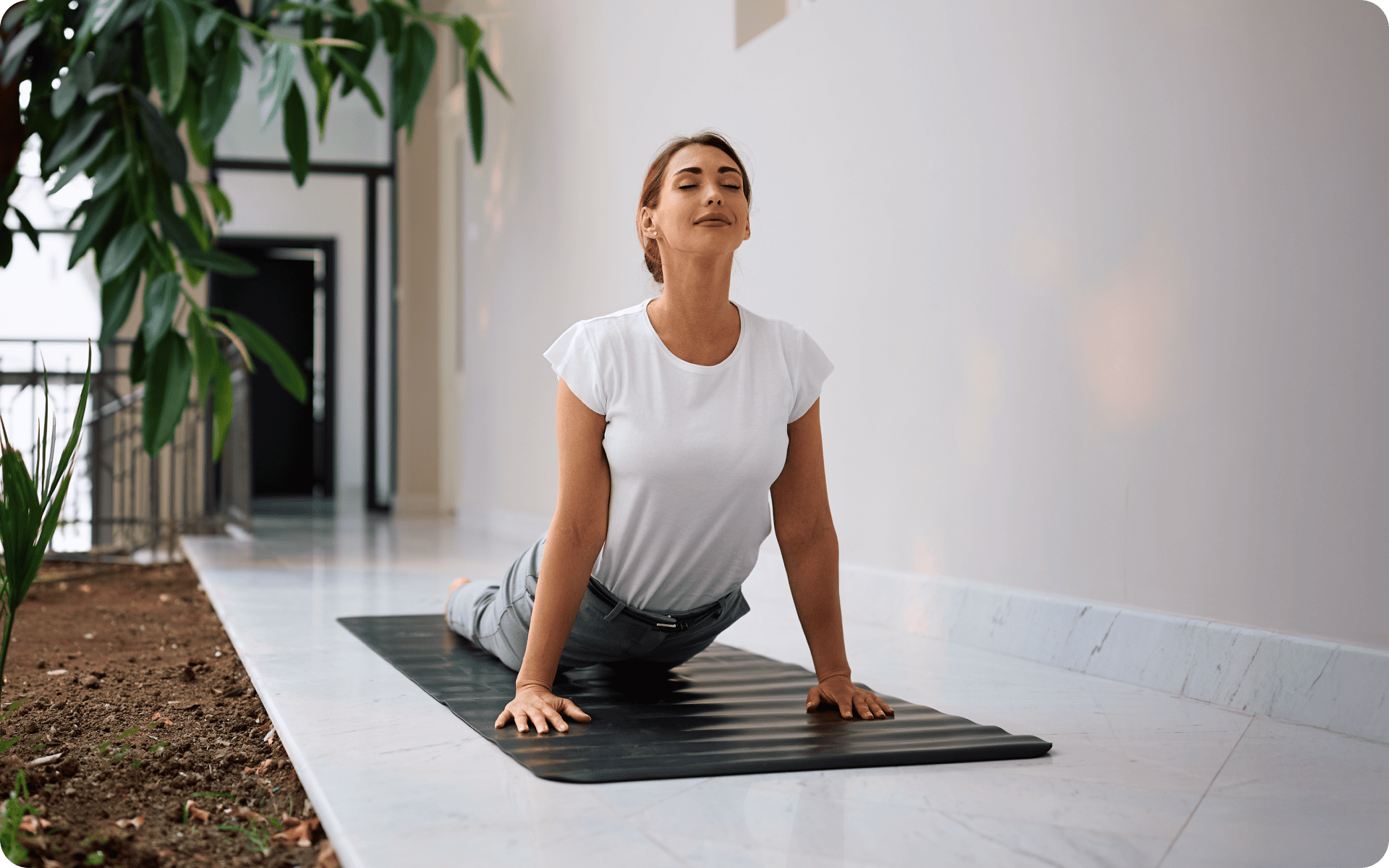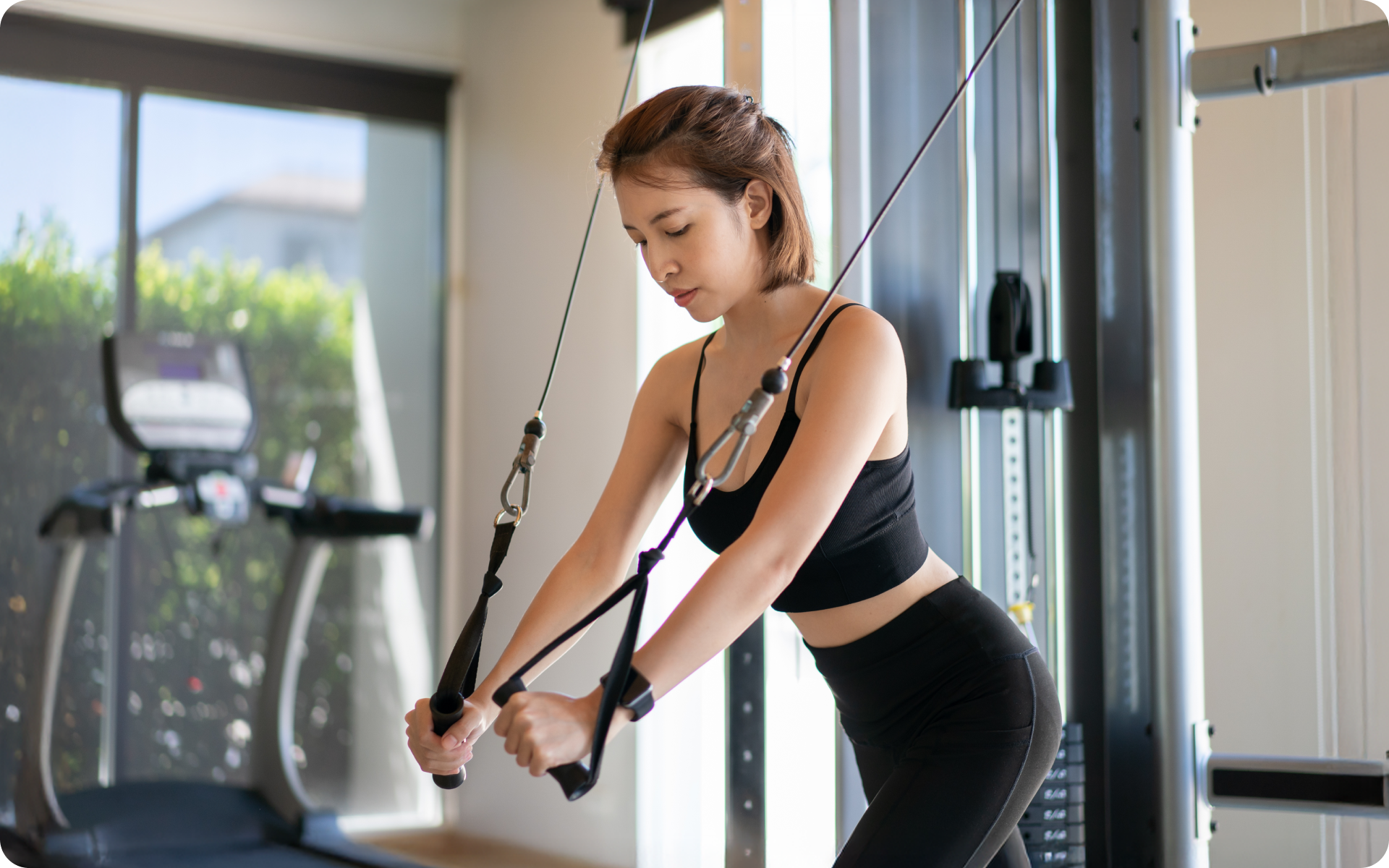A common misconception about Pilates is that it requires fancy equipment or a high degree of flexibility to get started. Many beginners tend to shy off, intimidated by the array of machines and the sight of skilled practitioners bending like pretzels.
Yet, Joseph Pilates, the creator of this fitness method, originally designed his workouts to be performed on a simple mat.
In his book “Return to Life,” he emphasizes the power of using your body weight as the ultimate fitness tool.
So, here’s a simple, yet effective, full-body Pilates workout guide for beginners. It focuses on strength, balance, and flexibility, and the best part? No equipment is needed! Just a mat, your determination, and this guide to jumpstart your journey into the wonderful world of Pilates.
This guide is designed to help you master the basics, build a strong foundation, and ultimately, enjoy the countless benefits of Pilates for your body and mind.
Is Pilates a Good Full Body Workout?
Pilates is a good full-body workout; unlike other forms of exercise that tend to focus on particular muscle groups, Pilates engages the entire body.
It’s designed to strengthen and tone your muscles while also improving your flexibility, balance, and coordination.
Betterme will keep you laser-focused on your weight loss journey! Nutrient-packed meal plans, fat-blasting workouts, galvanizing challenges and much more. Try using the app and see for yourself!
Here’s a breakdown of how Pilates targets different muscle groups:
1. Core
Arguably the most well-known benefit of Pilates is core strengthening (1). The workout routines emphasize the importance of a strong and stable core (4), which includes your abdominal, lower back, pelvic, and hip muscles.
Various Pilates exercises such as “The Hundred”, “Criss-Cross”, and “Scissor” specifically target these areas, enhancing core stability and promoting a strong and balanced physique.
2. Lower Body
Pilates is equally beneficial for your lower body. Exercises such as the “Pilates Side Kick” and “Leg Circles” focus on your leg muscles – the quads, hamstrings, and calves – as well as your glutes. These exercises help to tone and shape the lower body, improving strength and flexibility (2).
3. Upper Body
Although not as emphasized as the core and lower body, the upper body is not neglected in Pilates. Exercises like “The Plank” and “Push-ups” work on your arms, shoulders, and upper back muscles. They help improve upper body strength and posture, contributing to a balanced, full-body workout (2).
4. Back
Finally, Pilates places a strong emphasis on spine health. Many exercises aim to strengthen the back muscles and improve spinal mobility. This helps improve posture, reduces the risk of back pain, and contributes to overall body strength and flexibility.
Does Pilates Tone Your Whole Body?
“Toning” refers to the process of building lean muscle mass while simultaneously reducing body fat, and to some extent, Pilates does help achieve this.
Pilates exercises work the muscles in a slow and controlled manner, promoting muscular endurance rather than bulk. However, a pilates workout for full body for weight loss may not be as effective as other forms of cardio or strength training.
Other Benefits of Pilates
Aside from the potential toning effect, Pilates offers several other advantages that make it an ideal full-body workout for beginners:
1. Improved Flexibility
Flexibility is a key component of Pilates workouts, with an emphasis on gentle stretching and lengthening of the muscles. What happens when you practice Pilates regularly is that your muscles become more pliable, which can help reduce the risk of injury and support athletic performance (1).
2. Better Balance
Pilates exercises require a strong mind-body connection, promoting balance and coordination. As we age, our balance tends to deteriorate, increasing the risk of falls and injuries (1). Pilates can help maintain or even improve balance, making it an essential workout for all ages.
3. Mind-Body Connection
Unlike other forms of exercise where you may simply go through the motions, Pilates requires focus and concentration on each movement. This helps promote mindfulness and a stronger mind-body connection in everyday life (3).
4. Low Impact
Many people shy away from exercises that put a lot of strain on their joints, especially when starting a new workout routine. Pilates is a low-impact exercise, meaning it puts minimal stress on your joints while still providing a challenging full-body workout (1).
Anyone who’s recovering from an injury or has joint problems can benefit from Pilates. A pilates workout for seniors is also an excellent way to stay active without putting too much strain on the body.
5. Stress Relief
Moving your body is a great way to relieve stress, and Pilates has a particularly calming effect. The controlled movements and focus on breathing can help relax your mind and body (1). Further, some Pilates classes incorporate elements of meditation and mindfulness, and give a holistic workout for your body and mind.
Read more: Does Wall Pilates Work? Discover Why Wall Pilates is the New FitTok Hype
Is 30 Minutes of Pilates a Day Enough?
A 30 minutes pilates workout at home full body, no equipment is enough for most purposes. If you’re a beginner, it’s essential to start slow and build your way up.
Pilates is not about pushing yourself to the limit but rather focusing on proper form and technique.
Quality over quantity is the key here; 30 minutes pilates workout full body no equipment done correctly can have a more significant impact than an hour of rushed or poorly performed exercises. Interested in advanced exercises? Our what is wall pilates article has got you covered.
Here’s a sample 30-minute best pilates for beginners in order of exercises, and with steps for each:
30-minute Pilates Workout for Beginners
Half Roll Back
- Start by sitting up tall with your knees bent and your feet flat on the floor. Inhale as you lengthen your spine and exhale as you roll halfway back towards the mat, keeping your abs engaged.
- Inhale to hold, then exhale as you roll back up to the start.
Elbow Slip
- Lay on your back, knees bent, feet flat on the floor. Place your hands behind your head, elbows wide.
- Lift your head, neck, and shoulders off the floor, then slide one elbow towards the opposite knee, repeating on each side.
Hundred
- Laying flat on your back, lift your legs to a tabletop position. Curl your head, neck, and shoulders off the mat, reaching your arms long by your sides.
- Pump your arms up and down as you inhale for five counts and exhale for five counts.
Roll Up
- Start laying flat on your back and extend your legs out straight. Inhale as you reach your arms up overhead, then exhale as you curl your body up and reach for your toes.
- Inhale to hold, then exhale as you slowly lower back down.
Tree on the Mat
- Sit up tall with one leg extended out straight and the other bent with your foot on the inside of your extended thigh.
- Reach your arms up overhead, then hinge at your hips to fold over your extended leg.
Single Leg Circle
- Lay flat on your back with one leg extended up towards the ceiling.
- Circle your leg inward three times, then outward three times, keeping your hips stable and your abs engaged.
Rolling Like a Ball
- Sit up on your mat with your knees bent into your chest and your hands holding onto your shins.
- Tuck your chin into your chest and rock back to your shoulder blades, then go back up to sit.
Single Leg Stretch
- Lay on your back with your knees into your chest.
- Extend one leg out straight as you pull the other knee closer into your chest and switch.
Double Leg Stretch
- Lay on your back and bring both knees into your chest.
- Extend both legs out straight as you reach your arms overhead, then circle your arms around to pull your knees back in.
Criss Cross
- Lay on your back with your hands behind your head and your legs in a tabletop position.
- Lift your head, neck, and shoulders off the mat, then twist to bring one elbow towards the opposite knee, alternating sides.
Spine Stretch Forward
- Sit up tall with your legs extended out straight and spread slightly wider than hip-distance apart.
- Reach your arms out in front of you, then round your back as you reach your fingers towards your toes.
Swan Prep
- Lay on your stomach with your hands under your shoulders.
- Press your hands into the mat to lift your chest off the mat, keeping your neck long and your shoulders down.
Single Leg Kick
- Lay on your stomach with your hands stacked under your forehead.
- Bend one knee and kick your heel towards your glute twice, then switch legs.
BetterMe app will kick you out of the mental funk, shake off your extra weight, rid you off your energy-zapping habits, and help you sculpt the body of your dreams. Intrigued? Hurry up and change your life for the better!
Thigh Stretch
- Kneel on your mat with your body upright and your hands on your hips.
- Hinge back at your knees to stretch your thighs, then return to upright.
Shoulder Bridge
- Lay on your back with your knees bent and feet flat on the floor.
- Lift your hips off the mat, then lower back down.
Side Leg Kicks
- Lay on your side with your legs extended straight.
- Lift the top leg and kick it forward twice, then kick it back twice.
Teaser Prep
- Lay on your back with your knees bent and feet flat on the floor.
- Extend your arms towards your feet and crunch up, reaching for your toes. Lower back down with control.
Swimming
- Lay on your stomach with your arms and legs extended out.
- Lift your arms and legs off the mat, then flutter kick your arms and legs like you are swimming.
Push Ups
- Start in a plank position with your hands under your shoulders.
- Lower your body down towards the mat, then push back up to plank.
Remember to perform all these exercises with control and precision, making sure that your movements originate from your core.
In Pilates, the focus is on quality over quantity. So, pay attention to your form rather than the number of repetitions. Our pilates diet article has more on how to get the most out of pilates.
Is Yoga Better Than Pilates?
For many people, both yoga and Pilates can offer physical and mental benefits (3). However, there are some key differences between the two practices.
Yoga is a centuries-old practice originating in India, focusing on connecting mind, body, and spirit. It incorporates breathing exercises, meditation, mindfulness, and physical postures to improve flexibility, strength, and balance.
In contrast, Pilates is a relatively modern form of exercise created by Joseph Pilates in the early 20th century. It emphasizes core strengthening and stability through controlled movements that target specific muscle groups.
Both practices can complement each other and have their unique benefits. Yoga may be better for those seeking a more spiritual or meditative experience while still providing physical benefits.
On the other hand, Pilates may be more appealing to those looking for a physical workout that specifically targets the core. Read more about this in our wall pilates equipment post.
You can actually combine both yoga and Pilates in your fitness routine to reap the benefits of both.
Read more: 6 Wall Pilates Ab Workout Exercises You Should Include In Your Routine
FAQs
Can I Do Full Body Pilates Every Day?
Yes, it is safe to do full body Pilates every day as long as you listen to your body and make modifications if needed. It’s important to rest when needed and not push yourself too hard
Why Is Pilates Better Than Gym?
Pilates isn’t necessarily better than going to the gym, but it offers a different approach to fitness. While gyms typically focus on building muscle and strength through resistance training, Pilates emphasizes core stability and controlled movements for overall body conditioning.
Also, Pilates can be done without any equipment or with minimal equipment, so it’s more accessible and cost-effective compared to the gym.
Can I Lose Weight With Pilates?
Yes, you can lose weight with Pilates. While it may not burn as many calories as high-intensity cardio exercises like running or cycling, Pilates can still contribute to weight loss by increasing muscle mass and boosting metabolism. Plus, regular practice of Pilates can also improve your eating habits and promote a healthy lifestyle for sustainable weight loss.
Can Pilates Give You Abs?
Pilates is renowned for its focus on the core, including the abdominal muscles. Regular Pilates workouts can help you develop a strong, toned core. Remember, visible abs also rely heavily on other lifestyle factors such as diet and overall body fat percentage.
What’s Harder Yoga or Pilates?
Both yoga and Pilates can be challenging in different ways. Yoga can demand great flexibility and balance, while Pilates often requires intense focus, control, and precision for its intricate movements. The difficulty ultimately depends on the individual class and instructor, as well as your personal strengths and weaknesses.
The Bottom Line
Pilates is an excellent full-body workout for beginners that offers numerous physical and mental benefits. It targets all major muscle groups without the need for any equipment and is certainly a convenient and accessible fitness option. Try the mat sequence we shared above to get started on your journey to improved strength, flexibility, and balance with Pilates.
DISCLAIMER:
This article is intended for general informational purposes only and does not serve to address individual circumstances. It is not a substitute for professional advice or help and should not be relied on for making any kind of decision-making. Any action taken as a direct or indirect result of the information in this article is entirely at your own risk and is your sole responsibility.
BetterMe, its content staff, and its medical advisors accept no responsibility for inaccuracies, errors, misstatements, inconsistencies, or omissions and specifically disclaim any liability, loss or risk, personal, professional or otherwise, which may be incurred as a consequence, directly or indirectly, of the use and/or application of any content.
You should always seek the advice of your physician or other qualified health provider with any questions you may have regarding a medical condition or your specific situation. Never disregard professional medical advice or delay seeking it because of BetterMe content. If you suspect or think you may have a medical emergency, call your doctor.
SOURCES:
- Pilates – health benefits (2022,betterhealth.vic.gov.au)
- Pilates: how does it work and who needs it? (2011,nih.gov)
- The Impacts of Pilates and Yoga on Health-Promoting Behaviors and Subjective Health Status (2021,harvard.edu)
- The real-world benefits of strengthening your core (2012,nih.gov)




